Olfactometers are used for assaying behavioural responses of Drosophila to an olfactory stimulus.
In the Zantiks setup you can monitor the olfactory responses of individual Drosophila. The four-quadrant olfactometer is equally sensitive to attractive and repellent responses, allowing for a wide range of test odourants and conditions.
Zantiks offers two types of olfactometer, passive and active. The passive flow olfactometer can be used in both the Zantiks MWP and LT. The active flow olfactometer is used with the Zantiks MWP.
Experimental setup
Passive olfactory plate and chambers
The passive flow olfactory plate consists of 6 separate arenas. Each arena is an individual four quadrant olfactometer. A liquid odourant is placed onto cotton wool and then placed into one of the four quadrants. Each quadrant can hold one odour allowing for manual insertion of up to 4 odours. A single Drosophila is then placed in the annular chamber above the four quadrants containing the odour stimuli. The 6 arenas can be removed from the olfactory plate for ease of loading odour stimuli and flies.
A single passive flow olfactory plate can fit within the Zantiks MWP system. The plate must be be placed onto the light stimulation plate, so that it locates correctly inside the MWP system. Up to 8 passive flow olfactory plates can be placed into the Zantiks LT system. The LT setup comes with a stand off which raises the plates off of the LT base screen. Various locators can be used in the LT to position 2, 4 or 8 passive flow olfactory plates.
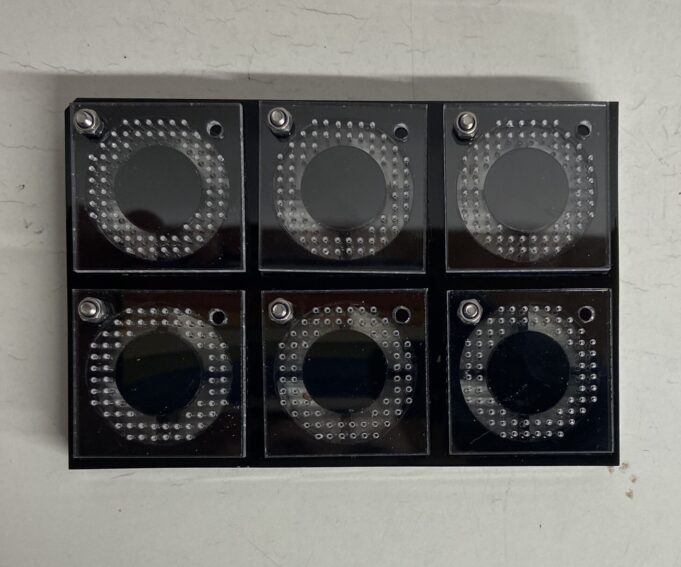
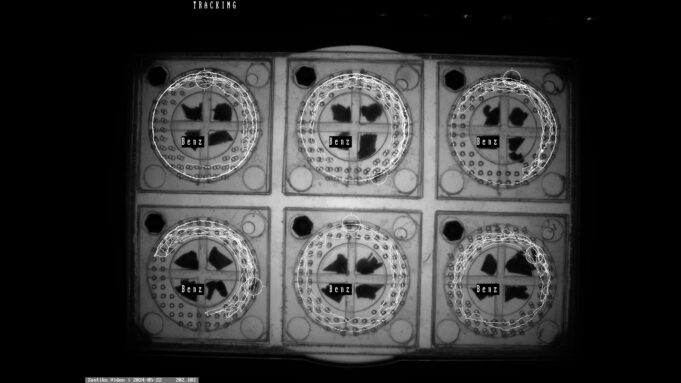
Active olfactometer plates and stands
The active flow olfactometer consists of an automated, 4-way pump stand, a 4 quadrant, annular chamber for fly placement and an air inlet, flow plate. The 4 quadrants are created by pumping air through tubing (connected to glass vials with the odour sources) into the stand and chamber’s floor. Each quadrant has an individual tube connected from below the flow plate and is linked to one of the 4 glass vials containing the odours.
A group of flies are placed into the annular chamber and this is placed onto the flow plate.
NOTE: Use of the active olfactometer is for capturing video of the behaviours and not for individual tracking of flies.
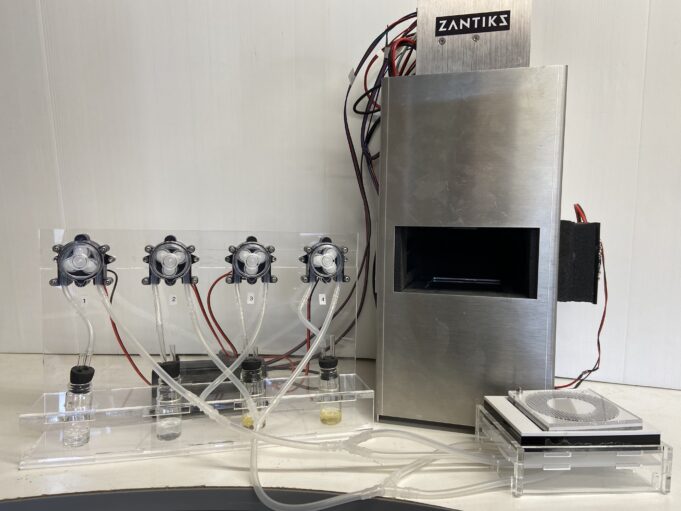
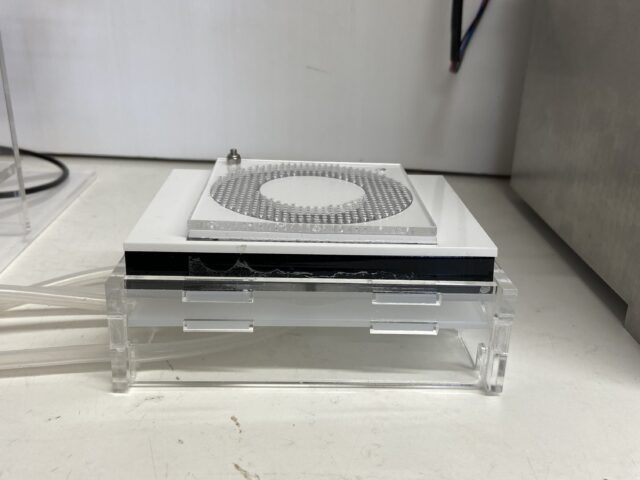
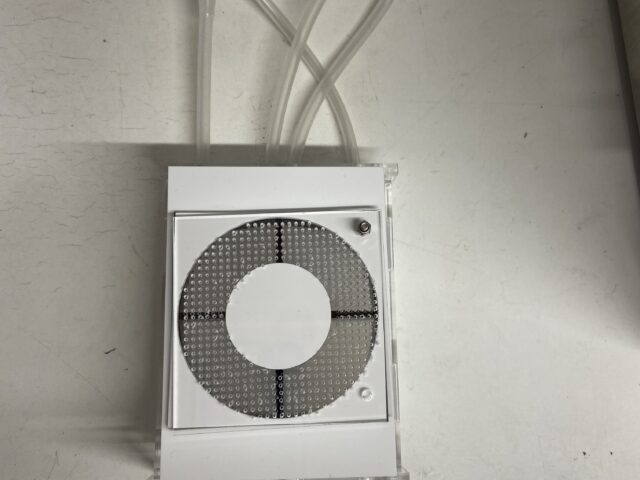
The active olfactometer needs to be plugged into the Zantiks top box in CN8, CN7 and CN2 (12V power). The cables should be labelled with their respective port numbers.
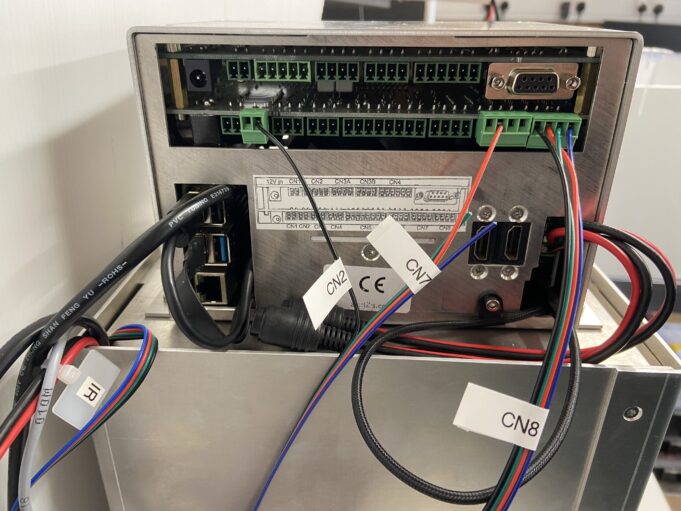
Experimental procedure
For both the active and passive olfactometers, once the flies are loaded, the olfactometer is placed inside the Zantiks MWP system (or LT system if using multiple passive plates at once).
For the passive odour delivery, individual flies are tracked in each arena for a period of time. For the active delivery either an individual fly can be tracked in the arena or multiple flies can be added to the chamber. Odours can be pumped into the four quadrants of the chamber. For multiple animals in a single chamber, it is not currently possible to provide tracking data, only video records.
Results/data output
For the data output the arena includes all 4 quadrants of the olfactometer. The arena can be split into 2 or 4 zones for data on quadrant use. See images below.


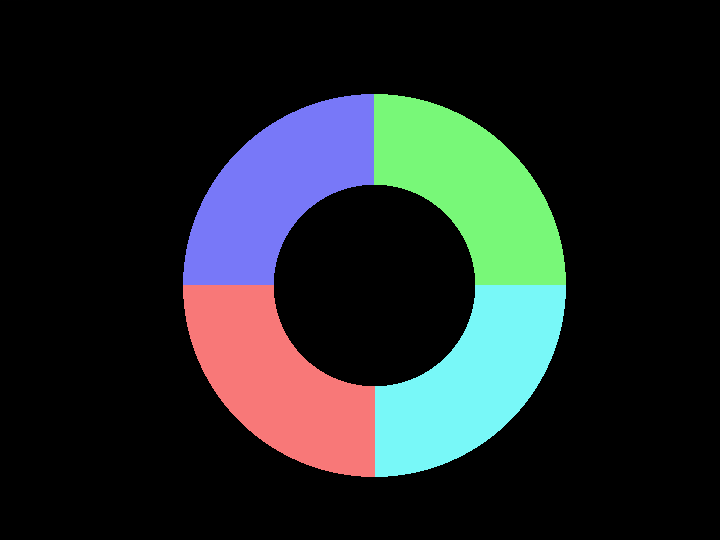
There are several parameters that can be collected during a passive, olfactory assay with Drosophila in a Zantiks unit.
- Total distance travelled in the arena
- Total distance travelled in each zone
- Total time spent in each zone
- Total number of entries, exits, or changes to each zone
- Total arena activity (MSD or pixel change data)
A couple of standard terms used to describe the Drosophila behaviour within an olfactometer include:
Attractant/Positions towards - Purposeful movement toward chemical source
Repellent/Positions away - Purposeful movement away from chemical source
Arrestant (stops/slows) - Reduce progression of insect through reduction of speed
Stimulant (starts/speeds) - Increase of dispersal from an area containing chemical; increase speed
Video example of Drosophila in the active olfactometer with mineral water (inert/control stimuli) and benzaldehyde (noxious stimuli).
Protocol scripts downloads
There is one script for the active flow, olfactory assay for adult Drosophila. This script will demonstrate how to operate the pumps for the four quadrants of the active flow olfactometer and includes the coding to export tracking data if tracking just one fly.
NOTE: If using the passive 6 arena, 4 way olfactometer the demo script can be used from the support page Writing and Exporting Zones Data. You will just have to update the assets to match those in your asset directory for the passive olfactometry plate and amend the data headings.
Assets
You will need to upload the appropriate asset into the Asset directory on your Zantiks Control Console and ensure the correct asset name is in the LOAD(ZONES,"name_of_asset") command in the script.
See the Calibrating your Zantiks unit page and Asset building in the MWP unit page for details on how to create assets customised to your system.



